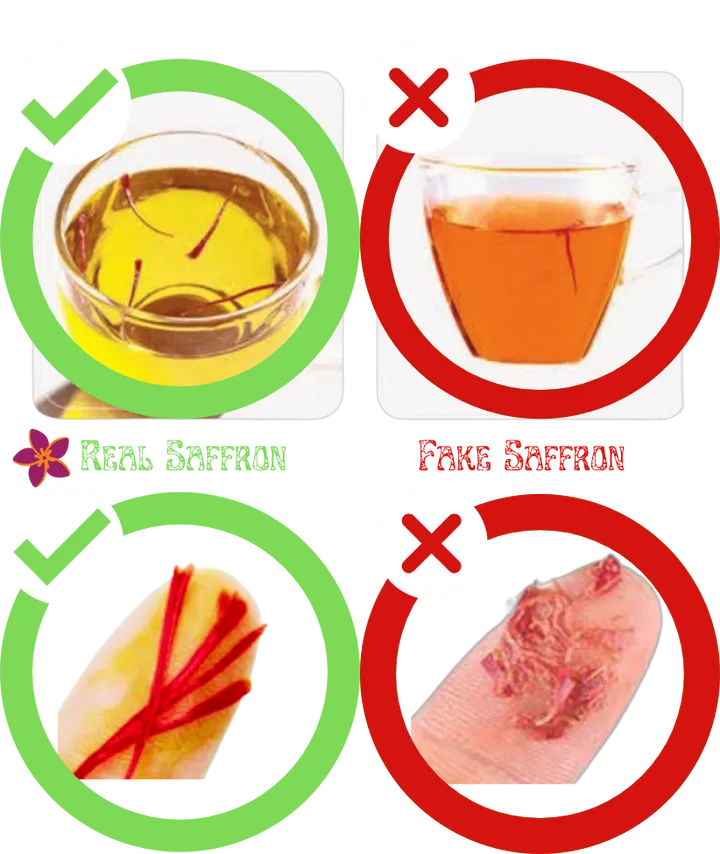
Adulterated Saffron : The Dangers
The Health Risks of Adulterated Saffron: What You Need to Know
Saffron, often referred to as the "golden spice," is renowned not only for its unique flavor but also for its numerous health benefits. However, the prevalence of adulterated saffron in the market poses significant health risks that consumers should be aware of. This blog explores the potential health concerns associated with using adulterated saffron, particularly focusing on carcinogenic elements.
Understanding Adulteration in Saffron
Adulteration refers to the practice of adding inferior substances to a product, often to increase profits at the expense of quality. In the case of saffron, common adulterants include artificial colors, synthetic compounds, and even other plant materials. These adulterants can compromise the integrity of saffron and pose serious health risks.
Health Concerns Associated with Adulterated Saffron
- Allergic Reactions Adulterants in saffron can trigger allergic responses in some individuals. Symptoms may include rashes, itching, or respiratory problems, which can significantly affect overall well-being.
- Toxicity Many synthetic substances used as adulterants are toxic and can lead to severe health issues. Regular consumption of such substances can accumulate in the body, leading to long-term health consequences.
- Loss of Medicinal Benefits Pure saffron is known for its medicinal properties, including its antioxidant effects and mood-enhancing qualities. Adulterated saffron may lack these benefits, leaving consumers without the health advantages they seek.
- Digestive Issues The consumption of saffron mixed with harmful substances can lead to gastrointestinal disturbances, including nausea and upset stomach. This can further impact overall health and quality of life.
- Potential Carcinogenic Contaminants Some adulterated saffron may contain harmful contaminants, including:
- Artificial Colors: Certain synthetic dyes have been linked to cancer (e.g., Red 40, Yellow 5) and can pose serious health risks.
- Heavy Metals: Contaminants like lead, arsenic, and cadmium are known carcinogens that can accumulate in the body over time, leading to various health issues, including cancer.
- Chemical Contaminants: Pesticides and other harmful chemicals used in the processing of saffron can also increase cancer risk.
Conclusion
The risks associated with adulterated saffron highlight the importance of sourcing high-quality products. Consumers should prioritize saffron from reputable suppliers who provide transparency and quality assurance. Always check for certifications or lab tests to ensure you are getting pure saffron, free from harmful adulterants.
We sell Pure Saffron (Mogra / Mongra Grade), Its better to be Safe than Sorry, Protect yourself and your family by making the right decision.
Buy best quality saffron (Grade : Mogra) only at SaffronLinks
References
- Zhang, A., et al. (2018). "Safety evaluation of artificial colorants: A review." Journal of Food Science.
- Kumar, S., & Singh, P. (2017). "Heavy metals and their impact on human health." Environmental Toxicology and Pharmacology.
- Patel, S., et al. (2020). "Cancer risk and artificial food colorings: A comprehensive review." Nutrition and Cancer.
- Liu, X., et al. (2019). "The toxicity of synthetic colorants: A review." Toxicology Reports.
By understanding the risks and ensuring that you choose high-quality saffron, you can enjoy its benefits while safeguarding your health.
